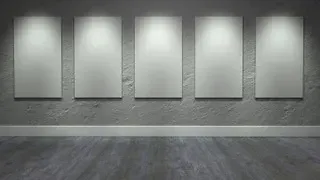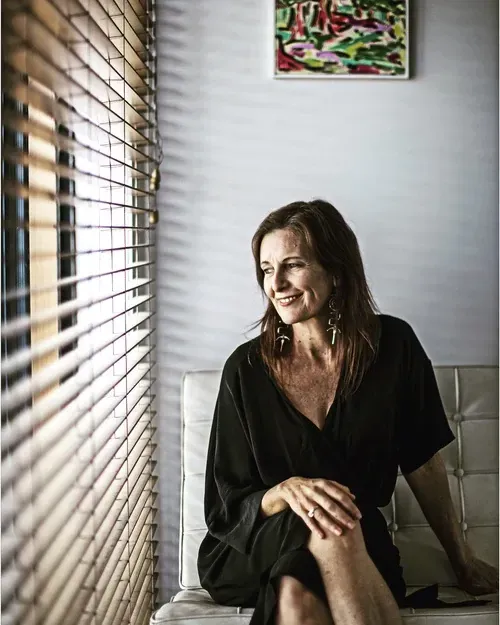Letters to an Emerging Creative: Getting Gallery Representation

As a decorated arts writer and critic, Andrew Wood has seen and experienced most of what the creative industry has to offer. In his previous open letters to emerging creatives, he detailed everything you need to know about getting started, about getting noticed and how to use the internet to your advantage (while avoiding the trolling pitfalls)
This time - it's how a visual artist should - and shouldn’t - approach a gallery to get their work shown.
Dear Emerging Creative,
My last three missives have been mostly about setting yourself up to get noticed and how to best represent yourself.
For visual artists, this leads into the fraught and complicated issue of representation.
A lot of emerging artists reach this point in their career assuming that without a dealer gallery, they don’t exist; that the only way to have a career is to have that kind of representation.
That’s not true at all.
What you really need to do is decide what kind of artist you are and what is going to be the best fit with your work.
There is no shame in having work in cafés, for example, and if you’ve been following these letters from the beginning, you have most of the tools you need to sell your own work online.
What a gallery can provide is reputation and industry knowledge, but it’s going to be on the gallery’s terms - and each one is different.
Some gallerists will expect a percentage for as much as 50%. Some will expect you to provide the refreshments (personally, I think that’s a bit stink and reflects negatively on the gallery). If you’re in the South Island and manage to get interest from a gallery in the North Island (where, let’s face it, most of the money is), you are very likely going to be covering hefty shipping costs. You also need to be careful about which gallery you go with, because some dealers are cowboys.
Always do your research. Ask around.
But we are getting ahead of ourselves. Dealer galleries tend to operate on the Hollywood principle of “Don’t call us, we’ll call you”. DO NOT COLD CALL OR DOOR KNOCK DEALER GALLERIES – nothing is more guaranteed to piss them off.
Gallerists usually have a very strong and cohesive view of the kind of art they want to represent. If they’ve been around a while, they usually have a keen feeling for the market.
Their interest is usually piqued by what they see in publications and word of mouth from people in their circle. If they have the time (or can make the time), the good ones will also check in on their local art schools for studio visits and exhibitions.
Gallerists will, for the most part, not be interested in people they don’t already know or have some kind of social relationship with.
That is why it is so very important to be a part of that scene: go to the openings, make an impression, make contacts.
Even if they don’t pick you up for their stable, a friendly gallerist can give you good advice about how to present and price your work.
I know a lot - and I do mean a lot of gallerists - and it occurred to me that no one ever asks them how they go about choosing artists to show.
So I did.
And the gallerists were quite happy to tell me what they want - because it makes their lives so much easier. They pretty much all agree on the main points.
Although for many years Scott Lawrie was director of the Vivian Gallery in Matakana, he relocated to Auckland proper to set up Scott Lawrie Gallery. He’s a very generous and approachable gallerist and set out what I think is a pretty comprehensive guide to what gallerists want.

Scott Lawrie. Photo: Supplied.
“Generally speaking,” he says, “I love to see what’s out there – and the best way to do that is when emerging artists who are unrepresented send you images of their work, either with a link to their website, or to good images.
“A short, polite email is the way to go – calling is a hassle, as is sending large parcels of work and written explanations unsolicited (a big no-no!).
“Like all good businesses, the best galleries have a brand positioning. This differs from gallery to gallery and means they represent a particular genre of work, target a specific demographic, or even have a ‘house style’.
“Personally speaking, one of the most telling ways to find out if an artist is serious, is how they ‘read the room’ when it comes to submitting their work. I often get submissions from artists, and it is glaringly obvious they would never be a good fit for the gallery – it’s the first test that determines the depth, self-awareness, and insight an artist has to their own practice.
“Independent galleries are at the very heart of Aotearoa’s art ecosystem, and a good gallery will give you a centre of gravity to build your career around.
“Don't expect miracles. Most of us make losses by representing young or emerging artists, but we are loyal. With a few exceptions, for most artists at all levels, sales don’t happen as soon as you’re represented. It’s usually a long, slow journey.”
Here are Lawrie’s Dos and Don’ts:
DO:
- Send a short note and some good images of your work by email. At this stage you’re selling photos of your artworks, not the real thing – so make sure your images look fantastic, not garage studio shots taken with a potato.
- Check in every year or so with the galleries you like, especially with new work - even just to let them know how you’re tracking. A gallery may not be keen on a body of work you did last year, but they might really love what you’re doing this year.
- Ask yourself, “Is my work the right fit for this gallery?” Again, this is so important. You wouldn't submit a short story into a poetry competition, so why send your work to a gallery where the visual register is the polar opposite to your work?
- Allow the work to speak for itself. It shouldn’t need selling. Most gallerists will instinctively know if it suits their gallery.
- Park your ego. Some artists think they’re a lot better than they actually are and have hugely inflated opinions of themselves and how amazing and important their work is. They can talk the talk, but the work usually just doesn't match up. (And yes, some are even professional snake oil salespeople.)
- Take advice if it’s given. A gallery business is very different to a studio practice.
- Get your Instagram and social media pumping! Most gallerists look at Instagram regularly to see what’s out there. (I’ve reached out to four artists, whom I now represent, this way.)
- Have a website with images at the very least. You’re in the visual arts after all.
- Be nice. Words travel.
DON’T:
- Despite looking like we sit behind iMacs all day browsing, gallerists are incredibly busy. The admin side alone takes up hours per day. So continually hassling a gallerist for a response or feedback isn't a good idea; if they like your work and think you’ll fit into their market positioning – believe me they’ll get in touch. If they don't, don't take it personally. We get around 6-8 submissions per month from artists looking to be represented. And we maybe take on two or three in a good year. There’s a lot to consider.
- Don't just turn up. Send an email first or ask for an appointment - 20 minutes should do it - and come armed with specific questions or images you’d like to get feedback on.
- Similarly, don't ever “drop works in” to the gallery without getting express permission first. We’re all stuffed for space usually, so this is a quick way to really get the gallery offside from day one, and most gallerists have long memories!
- If you do get invited to show – even into a group show – be grateful, be humble and be pleased with yourself. It’s a complete privilege to be included in a gallery show as an emerging artist, and there are literally thousands of hard-working artists who never get the chance. Again, check your ego at the door.
- Forget everything you learned in art school. Most of it doesn’t apply to the real world.
“What we encourage,” says Dominic Feuchs, Director of Starkwhite gallery in Auckland, “is for artists – and it’s mainly younger artists starting out we’re talking about here – to email us for feedback. We’re always very happy to comment on people’s artwork. Cold calling is a real no-no because we’re usually frantically busy. It’s getting like the US where all the galleries have signs saying ‘no walk-ins’ or ‘no solicitation’.
“In the first instance, involve yourself, come to openings. Be aware of the programme, familiarise yourself with the kind of shows we do, and be sure your work is relevant to it. Start with an email with a good, well-presented PDF portfolio or link to your website attached. You very likely won’t pick up a show with us but we might be able to direct you to more appropriate galleries and venues.
“In the one in a million case that we want to do something with a new artist, the best thing is to begin a conversation. Opening that dialogue is a great start.”

Melanie Roger (above), of Melanie Roger Gallery had this to say:
“Do your research. Each gallery has its own focus so work out where your work might fit best. Look at what sort of gallery model they are too - do they represent artists or can you book a slot?
“Visit the galleries. Go to the openings. Do you like the people? Do you like the vibe?
“Don’t turn up at the gallery with your work. Send an email. Include images of your work - (not huge files), an artist’s statement, a cv, any texts about your work. Send it with a cover letter addressed to the gallerist - check their name and use it. Don’t cut and paste and don’t assume anything. I am so sick of having approaches that say ‘Dear Sir’.”
That’s a really good point to take notice of with any gallerist. Who are they? Address them. Use the correct pronouns etc. It may also play into how receptive to any identity messages in your work and how receptive a gallery is going to be to them.
“If,” says Roger, “they have interest they will get in touch to arrange a time to meet and view work.
“You need to know that galleries get a lot of approaches each and every week. Personally, I try to reply to everyone. Many don’t though. Realise that we are super busy looking after the artists we already work with. Pick your timing.”
Until next time my lovelies,
Ngā mihi nui
APW XOXO



